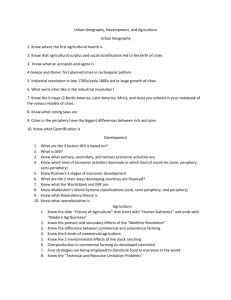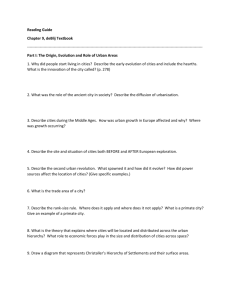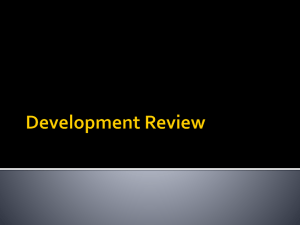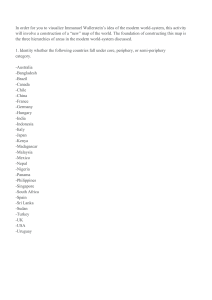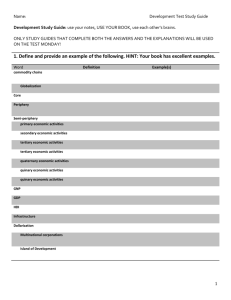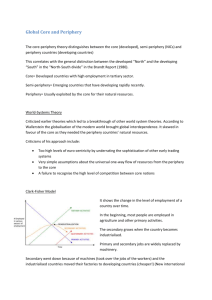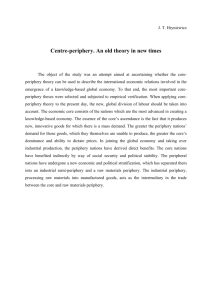Urban Trends and Change U.S. Western Europe Eastern Europe
advertisement
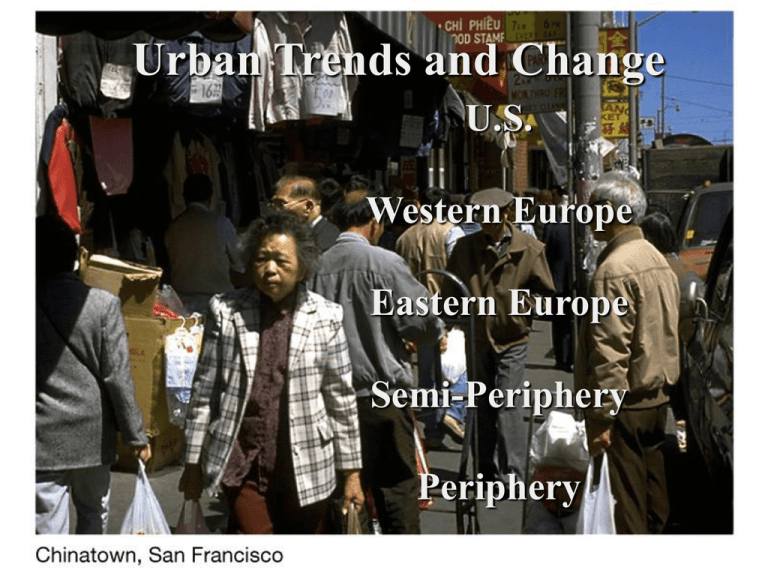
Urban Trends and Change U.S. Western Europe Eastern Europe Semi-Periphery Periphery Business-service Cities in the United States “Basic” functions serve people beyond city Concentric Zone Model (1923) Chicago CBD Gold Coast downtown for North Side; Loop for South Side Immigrant workers’ housing, early 1900s Industrial zones Older residential G.I. Bill homes Suburbanization (Commuters’ zone) Takes tax base, life out of cities; Use space inefficiently, pave over land Sector Model (1939) Sectors (not rings) attractive for certain activities; Spread along rail lines Multiple Nuclei Model (1949) More than one center; Organized in nodes; Attracted or repulsed by activities Peripheral Model (contemporary) Edge cities (CBDs on Metro fringe) Eau Claire Sprawl Outlying lands become more expensive, easier to buy out Loss of farmland, green space Dying downtowns Commercial district moving outward Some communities trying to recover Proposal to tax suburban workers In cities Inner City decay “Redlining” of “bad risk” areas by lenders (bank loan denials, high insurance) prevents recovery (flip side of suburbanization) Predatory lending “Subprime” loans targeting vulnerable poor with high interest rates, hidden fees Gentrification High income young people take over inner city For character of old buildings and central location Low-income people drive out by high rents Homelessness Rose in 1970s in U.S. (1-2 mil.), Europe Result of gentrification, budget cutbacks Many homeless are women and children Homelessness In front of San Francisco City Hall Homelessness UN Plaza, San Francisco Urban fortification: Spikes on office window ledges “Informal Economy” in Core Activities “off the books”: Street vending, recycling, etc. keeps people alive Growth of Milwaukee Streetcar lines connect neighborhoods to downtown Stimulate commercial nodes Segregation (ethnic/racial spatial separation) Result of housing discrimination, “white flight” to suburbs Minority need for social/cultural mutual support Segregation or Cultural Autonomy? San Francisco Chinatown Suburbs • U.S. – Counterurbanization of wealthy – More than half live in suburbs today – Will grow with “telecommuting” • Europe – Industrial workers – Immigrants • Periphery/Semi-Periphery – Rural poor migrants – Shantytowns, Squatter settlements Western European City Western European “Squatters” Eastern European City Budapest, Hungary Semi-Periphery City São Paulo, Brazil “overurbanization” Lima, Peru Mexico City, Mexico Rio de Janeiro, Brazil Favela colony (Brazil) Shantytown Lack of basic services, infrastructure Squatter settlement Influx of rural migrants (new “shock cities”) Informal Economy in Periphery Activities “off the books”: Street vending, recycling, etc. keeps people alive Squatter settlements in Periphery Pollution/ unhealthy conditions Evictions Some improving with “self-help” projects
